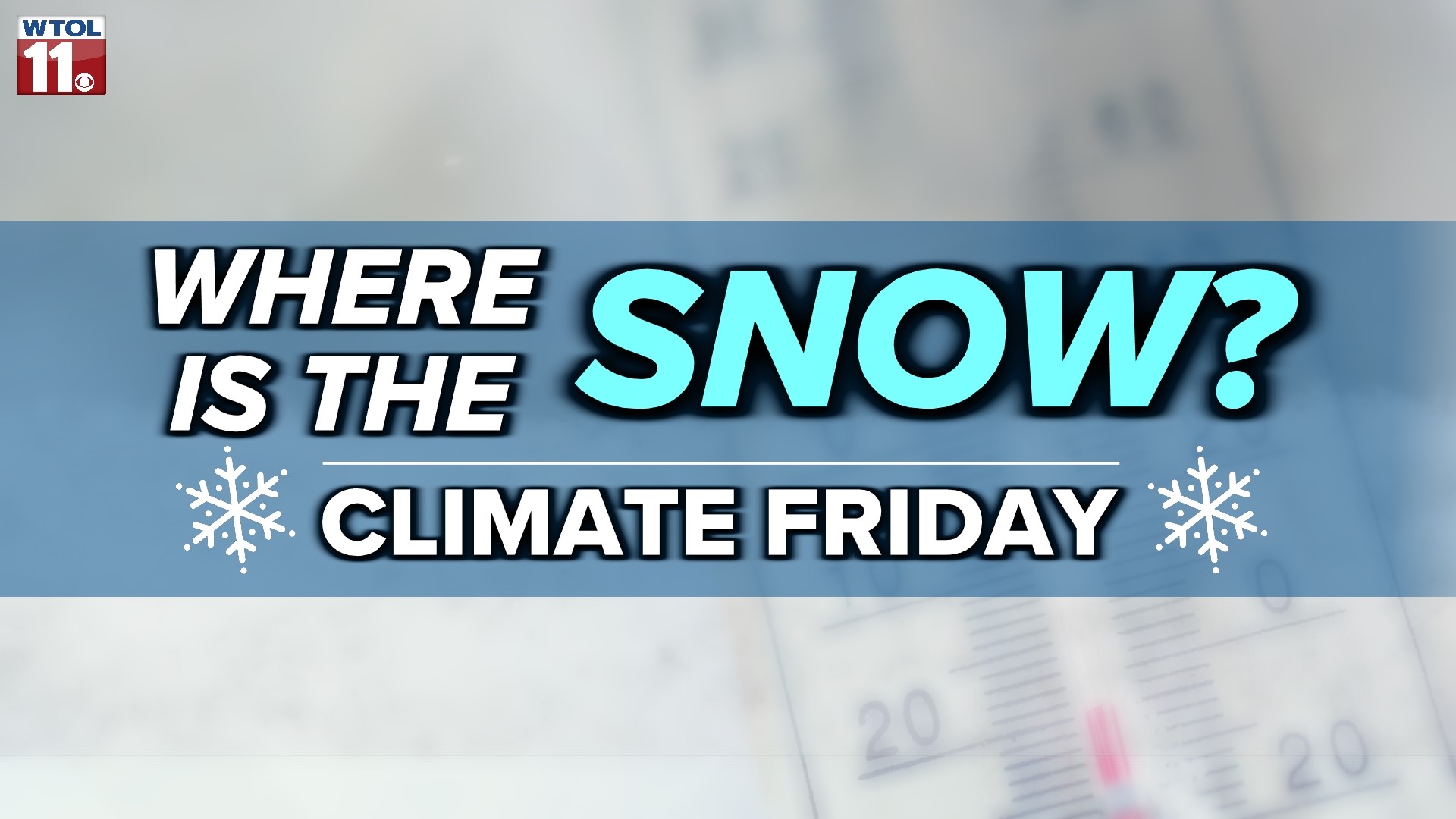TOLEDO, Ohio — Without any measurable snowfall, this January has felt more like spring than winter.
Unseasonable weather conditions continued this week, which dosed out 50-degree temperatures and severe thunderstorms. Snowfall has remained elusive this month, and climate change may be playing a role.
In this week's Climate Friday Newsletter, we'll break down the impacts of climate change on our snowfall deficit.
If January ended today, it would go down as the least-snowy on record in Toledo. With just a trace of snowfall, this January has been remarkably dry and mild. The award for the least-snowy January currently goes to 1935, which brought a mere 0.3 inches of accumulation.
Time will tell if this month surpasses that historic start to 1935, but right now, it sits atop the list of least snowy Januarys. Typically, January is the snowiest month of the year, and on average, brings 12.3 inches of accumulation. Even though we're in the heart of winter, it doesn't look or feel like it.
But it's not just this month that has failed to deliver on sticking snow. This entire winter has brought only 1.6 inches of accumulation, putting us 14 inches below-average. Most of our precipitation this winter has come in the form of rain, as 3.28 inches of rain has fallen this season.
This week's severe weather and heavy rain continued the trend of mild and rainy winter weather. Despite the lack of snow, late January and early February could chip away at the deficit, and the WTOL 11 weather team is forecasting a transition to more typical winter weather.
Weather patterns and climate change have played a role in our lack of snowfall. This winter, our third consecutive La Niña winter has contributed to the snowfall deficit. La Niña, defined by the presence of persistently colder than normal waters in the equatorial Pacific, generally favors mild and wet winters for the Midwest and Great Lakes region.
This weather pattern produces an active jet stream that churns out numerous storm systems. Even with an active jet stream, mild temperatures have resulted in many of these weather disturbances falling in the form of rain.
You may have noticed how many rain systems this winter has dealt out. La Niña has contributed to the warm and wet conditions this winter.
Additionally, climate change is making winter weather milder and less snowy on average. In Toledo, the winter season is 2-3 degrees milder than it was just a decade ago. Every 10 years, the National Weather Service issues a new set of weather normals, and the latest climatology data reflects rapid warming since 2010.
The month of December has warmed up a whopping 3.1 degrees in just 10 years. Since the 1970s, winter weather has grown approximately 5 degrees warmer. This significant uptick in winter temperatures has led to more rainfall and less snow during the winter months.
Climate change will continue to make winters warmer and wetter in the future.
Don't write off this winter just yet, however. The WTOL 11 weather team is forecasting a big flip in the weather pattern that could bring us accumulating snow in the next couple weeks.
February will likely bring more seasonable weather conditions with colder temperatures and snow potential. February has been the harshest winter month the past few years, and this backloaded winter trend has grown more common due to climate change.
Last year, over a foot of snow fell between Feb. 2 and 3. In 2021, the historic snowstorm of Feb. 15 and 16 delivered an impressive 14.5 inches of accumulation.
It's too early to know whether this February will bring a big snowstorm, but the next few weeks are trending colder and snowier.
RELATED VIDEO

